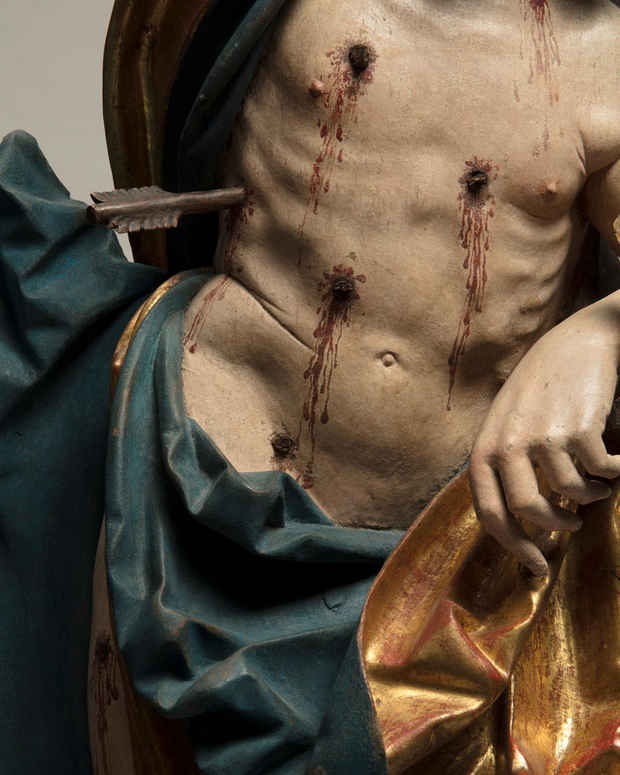“The Medieval Body” Exhibition
Luhring Augustine Gallery

This event has ended.
Luhring Augustine and Sam Fogg presents The Medieval Body, the third in a series of vanguard exhibitions that places medieval masterpieces within a contemporary context. The first two collaborative projects were met with much acclaim, Of Earth and Heaven was presented in 2018 and Gothic Spirit in 2020. Opening January 21 in Luhring Augustine’s Chelsea location, The Medieval Body will be on view through March 12, and is accompanied by a fully illustrated catalogue.
The title of the exhibition refers to both a literal thread of figuration that runs throughout the works in the presentation, as well as the complex and often shifting symbolism of the human body in the medieval period. For thinkers and artists of that time, the human body served as a rich source of religious and philosophical significance, one that was in a constant state of flux between idealism and disfigurement. While the early Middle Ages reserved representations of suffering bodies to the margins of their world, the later Middle Ages displayed wounded bodies in the most central spaces of public life. The crucified body of Christ and the wounded bodies of saints assumed important positions as they were displayed on altars, in processions, and on the exteriors of churches. Representative of this, The Martyrdom of Saint Sebastian by Jörg Lederer gives prominence to the late medieval trend of displaying a suffering human body at the altar, while Saint Quentin being tormented portrays a vivid murder scene meant for the façade of a church - the gruesome episode is palpable in the intricately sculpted depiction. The intimate belief in the inextricable connection between the body and the soul, whether in life or in death, also led to the worship of saints’ body parts. The enormous sacrament houses created in late medieval Germany were meant to ostentatiously display and stage Christ’s transubstantiated body. The exhibition features a work attributed to Lorenz Lechler and dated to 1502, a rare Monumental Drawing of a Sacrament House which was designed to stand over 70 feet tall.
The Medieval Body tells a unique story about the human form as both a physical entity and a recognizable metaphor. Presenting works spanning the course of a thousand years, this exhibition offers insight into the body as an essential image-making tool with far-reaching implications for the development of art in the European Middle Ages.
Media
Schedule
from January 21, 2022 to March 12, 2022